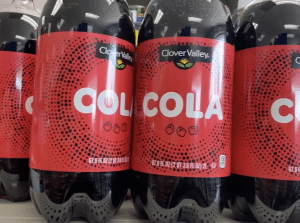The (infernal) tug-of-war between the zealots of “WE MUST SELL STUFF NOW” and the stoics who calmly say “we must brand for tomorrow” continues to intrigue me.
The landmark research of Les Binet & Peter Field, groundbreaking work from Orlando Wood, and Professor Mark Ritson’s “bothism” inspired this 4-minute production.
Maybe it will help.
Or not. Stay in your silo.
Watch the video above or read the transcript below.
There’s an advertising battle that’s existed since the invention of the first coupon.
Do you want sales now, or should you wait and cultivate a strong brand?
It’s a decision businesses wrestle with. It’s a tug of war ad people propagate.
Now or later? Sales or brand? Performance or salience?
The problem isn’t the debate. The problem is the conjunction.
Would that it could be that easy.
We already know that a combination of this and that is stronger than this or that.
But the problem isn’t quite solved. Knowing what’s inside these camps can clarify the tools we employ and don’t employ.
Let’s start on the brand side.
 This arena is what Nobel Prize winning author Daniel Kahneman called System One, the mind of our brain where emotion and intuition live. It’s where we get a gut feeling about things. It’s the unconscious piece of the mind that tells us to avoid dark alleys or to reach for a Coke instead of whatever this is.
This arena is what Nobel Prize winning author Daniel Kahneman called System One, the mind of our brain where emotion and intuition live. It’s where we get a gut feeling about things. It’s the unconscious piece of the mind that tells us to avoid dark alleys or to reach for a Coke instead of whatever this is.
This is where memories are made and memory-making tools go here. Here, we don’t make points. We make memories.
Logic arguments have no business here.
It’s why candy commercials get to be so different.
Guy: “Alright, game.”
Girl 1: “Hey, do you guys wanna do a little swap?”
Girl 2: “I mean, yeah, I could be into it. Would I, like, move in with Tyler, or is it a smart, you know, one-time casual thing?”
Girl 1: “I was talking about switching up teams for fun.”
Girl 2: “Of course. Whose turn is it anyway?”
Guy: “Tyler’s, apparently.”
There’s nothing more impulsive than buying candy. It’s a spur-of-the-moment decision. But even a $1.99 candy bar understands why building the brand is so important.
That commercial is nonsense and memorable.
But it’s a memory that’s attached to the product. You’re not you and you’re hungry. Have a Snickers. That’s its only job.
No talk of refined chocolate, nothing about organic peanuts from Virginia. No explanation of nougat, whenever the hell that is.
On this side is activation, performance ads.
These babies are logic-based. This is when people are ready for the details. They want a checklist of facts, apples to compare to apples. System Two, as doctor Kahneman calls it. This part of the sale moves slower and is more calculating.
It requires effort and lives in the conscious mind. Make your points here.
For you, for everybody who craves good candy, a Snickers candy bar has everything everybody likes. Inside a fluffy nougat flavored with peanut butter and molten milk, then a creamy golden caramel layer with lots of fresh whole Virginia peanuts. And covered all over with fewer milk chocolates.
Boy, what a bar. Buy Snickers one at a time, six at a time in the popular six pack, and it won’t be long till you’ll wanna buy Snickers candy bars by the box, like this.
When you crave peanuts and chocolate too, ask for Snickers.
You might love the first Snickers ad while mocking the second one, but this isn’t about OR. It’s about AND.
Brand building or awareness must be emotion-heavy, and logic-light. When the customer gets ready to purchase, that’s when you unload the facts.
Charlie Moger made a brilliant video about this and how people toggle back and forth between exploration and evaluation.
Go back and watch it.
Not or, and.
Keep emotion and memory building on the branding side of your tactics. Put facts and details on the sales side. Think of these things like orange juice and toothpaste.
People love a nice glass of orange juice and it would be foolish to skip toothpaste.
Put them both in the same mouth and things get weird.
Understand the order of these things, and life gets a lot easier.
It need not be a tug of war.
Now this video, yes, is for us, the partners, but also for your clients.
This came about because of a conversation that I was having with a client and we got stuck in this back-and-forth between what do we put here and what do we put there. And I wanted to clarify why I believe these things belong over here and those things belong over there and keep them in separate buckets. And I think once you understand that and how you budget it, which we’ve learned from Les Binet and Peter Field, That’s when this becomes a lot easier for us to do and for our clients to understand.
- Marketing Has a Physics Problem - December 3, 2025
- AI is OK - August 14, 2025
- Emotion in Advertising Equals Dollars in Business - December 3, 2024
